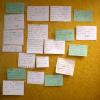Related Content
 |
The Need for Well-Formed, Creative Minds in Software Testing The need for creativity and innovation is felt in the world of software testing more than ever before given how dynamic and fast-paced it has become. With so many changing technologies and a multitude of people to interact with, a tester’s job calls for newer and better ways of accomplishing tasks. |
|
|
|
What to Say (and Not Say) in a Job Interview The interview can strongly influence whether you get the job you’re seeking. It’s not just what you say in responding to interview questions that’s important; it’s how you say it. And maybe even more important than things you should say is steering clear of things you shouldn’t say. Here are some points to consider. |
|
 |
6 Major Challenges of Cloud Computing Companies of all sizes depend on cloud computing to store important data. However, significant factors such as cost, reliability, and security must not be overlooked. Here are six common challenges you should consider—and develop plans to mitigate—before implementing cloud computing technology. |
|
 |
Transforming Your QA and Test Team Testing professionals are essential to the success of technology projects. Delivering better, faster, and at a lower cost is not solely done with automation and development teams—testing professionals are here to stay and grow. But we have to fight for our place, and that means evolving with industry requirements. |
|
 |
Balance Technical and Social Skills for Project Success Software testing is a socio-technical undertaking, which means that effective test strategies must incorporate a balance of technical capabilities relating to processes and tools and social capabilities used for communication and problem-solving. This balance enables true project success. |
|
 |
Use Continuous Backlog Grooming to Refine Agile Requirements Continuous backlog grooming means systematically refining your user stories: breaking up larger stories, obtaining detailed requirements, writing the requirements in terms of acceptance criteria and acceptance tests, and sharing and refining these details with the team. Acceptance test-driven development can help. |
|
 |
Becoming a Modern Software Tester Testers today need to look more like developers than users. Automation is becoming essential, so understanding at least basic programming is a must. As companies adopt agile and deliver more frequently, modern testers should learn to code, understand continuous integration, and use tools to eliminate constraints. |
|
 |
How to Stay Happy in Your Testing Career Jon Hagar believes a tester should have fun, find their work challenging, and look forward to an interesting career. Some great ways to achieve this job satisfaction are to keep learning and updating your skills, develop a career plan for the future, and seek out the fun challenges in software testing. |








